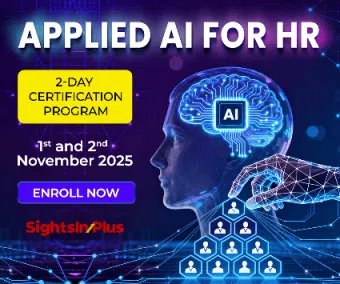The humble “joining day” has evolved from a transactional formality into a strategic, full-scale onboarding experience. Much like how sales doesn’t end with closing a deal, hiring no longer ends with an offer letter.
Today, companies treat new hires as internal customers—investing in dedicated onboarding teams to ensure early engagement, alignment, and long-term retention. Just as customer success drives loyalty and advocacy, effective onboarding shapes employee success from Day 1.
What is the Missing Link?
Corporate onboarding today is often detailed and well-planned. But when it comes to job or functional onboarding, most employees are left to figure things out as the time passes, on their own.
This lack of structure, delays role clarity, increases settling-in time, and risks early disengagement. Programs like the Buddy System are widely adopted to ease this transition, but their impact hinges entirely on how seriously the buddy takes their role and how well the program is implemented.
Equally overlooked is the human side of onboarding—social engagement and cultural assimilation—which often slips through the cracks of functional checklists and HR task flows.
In today’s age of hyper-personalization, we are still abiding to one-size-fits-all onboarding model – offering the same onboarding experience to every new hire—regardless of role, background, or level. This cookie-cutter approach misses the mark in fostering belonging, confidence, and early productivity.
To truly make onboarding effective, companies could focus on three things: structured role-based training, meaningful social integration, and personalized experiences. If the focus of the onboarding can go beyond orientation only then can we truly support performance, belonging, and long-term retention.
How to Hit the Ground Running?
Onboarding today is more than a checklist—it’s the first real impression of a company’s culture, values, and people. And that impression begins the moment an offer is accepted. Most of the organizations now engage new hires early through welcome kits, culture videos, and digital pre-boarding processes.
Tasks like paperwork, tax forms, and policy acknowledgments are often completed even before Day 1, easing the administrative burden and allowing focus on human connection.
However, onboarding must go beyond logistics. Tailoring the experience through the lens of generational diversity is crucial for deep engagement. Different generations have distinct learning preferences—while experienced professionals may prefer structured sessions and detailed documents, younger employees often lean toward digital modules and on-demand resources. Providing multiple learning paths makes the process more inclusive and effective.
Equally important are social interactions and cross-functional exposure. Programs like job shadowing, peer mentoring, and well-executed Buddy systems help new hires understand workflows, build networks, and feel supported. Cross-generational mentorship further fosters mutual respect and learning.
Throughout the journey, the human touch remains essential. HR contact from pre-joining touchpoints and continuing through the onboarding process, to leadership affability and casual cultural cues— like watercooler humour. Listening to new hires, and acting on their feedback, helps greatly in continuously refining and enhancing the onboarding experience.
While digital tools are indispensable in streamlining routine tasks—like document collection and joining status tracking—they cannot replace human connection. Technology alone cannot address queries or grievances of an employee.
Human experience shall always continue to remain at the focal point of technology implementation. In this context, a well-structured, cross-functional, and immersive induction program can be a great leverage.
At NCDEX, we strive to provide a comprehensive onboarding to help employees feel welcomed, informed, and confident in their new roles. Ongoing support and hand-holding are equally vital.
A structured 30-60-90 day focus group discussion (FGD) is another tactic that can identify any early signs of disengagement or challenges, providing scope for proactive intervention. With a sound support structure, the new hire will feel embraced and it will result in better productivity and renewed enthusiasm.
Why Success Lies Beyond Completion Rates?
Traditional onboarding metrics—such as completion of paperwork or training modules—fall short of capturing onboarding effectiveness. Organizations must look deeper, measurement tactics:
- Measuring early engagement levels through pulse surveys
- Tracking time-to-productivity, i.e., how quickly a new hire starts contributing effectively
- Assessing new hire satisfaction with the recruitment and onboarding experience
- Monitoring retention rates within the first 6-12 months
Insights from these data points can inform continuous improvements, making onboarding a dynamic, evolving process rather than a one-time event.
Building Bridges
The transition from candidate to an engaged employee is one of the most critical phases in the employee lifecycle.
A seamless hiring-to-onboarding experience not only improves retention and productivity but also strengthens employer branding—demonstrating an organization’s commitment to its people.
By integrating technology, fostering collaboration between recruiting and the wider HR team, prioritizing human connections, and aligning onboarding with organizational culture, companies can bridge the HR disconnect effectively.
Ultimately, organizations that invest in holistic and personalized onboarding will not only retain their top talent but also empower them to thrive—fuelling long-term business success.
Note: We are also on WhatsApp, LinkedIn, Google News, and YouTube, to get the latest news updates. Subscribe to our Channels. WhatsApp– Click Here, Google News– Click Here, YouTube – Click Here, and LinkedIn– Click Here.



